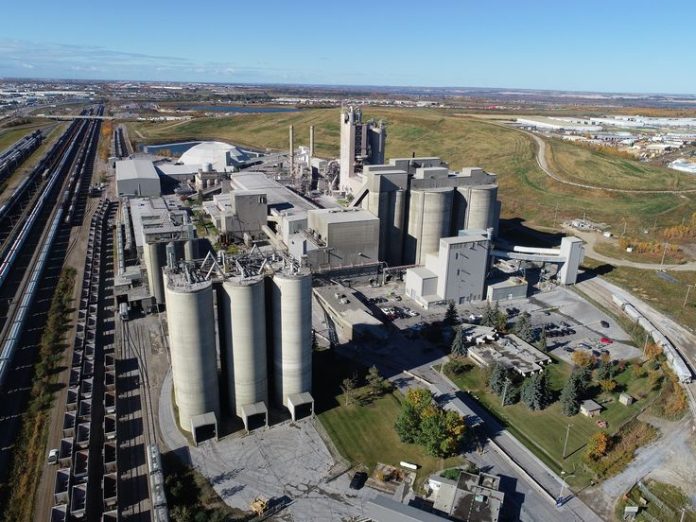Germany has unveiled a €6 billion ($7 billion) industrial decarbonization programme that, for the first time, integrates carbon capture and storage (CCS) technology to cut emissions across its heavy industries. Announced by Economy Minister Katherina Reiche in Berlin on Monday, the initiative aims to help steel, cement, chemical, and glass manufacturers transition toward net-zero production by covering the extra costs of adopting cleaner technologies. Under the plan, companies will compete for 15-year state-backed contracts beginning in 2026, a move expected to reshape Europe’s industrial landscape and reverberate through African economies linked to the continent’s energy and materials trade.
What Germany is doing here matters for two reasons. First, by guaranteeing a long runway of support through reverse auctions, it reduces technology risk for hard-to-abate sectors. Second, it sets a public benchmark for the cost of avoiding a tone of CO₂ in industrial processes. African exporters to the EU will be measured against that yardstick. CBAM’s definitive phase begins in 2026; lawmakers have since backed adjustments that lighten admin for small importers and shift permit trading to 2027, but the core message has not changed: embedded emissions must be counted and paid for. For African mills and kilns feeding EU demand, the economics of fuel-switching, clinker substitution, efficiency upgrades and, in some cases, CCS pilots are about to be tested in real time against Germany’s new reference prices for abatement.
Read also: EU’s carbon border tax reforms set to redraw Africa–Europe trade dynamics ahead of 2026 rollout
Cement is the most immediate pressure point. The industry’s direct emissions intensity sits just under 0.6 tCO₂ per tone of cement; capacity on the continent is expected to grow sharply this decade, raising the stakes for locking in lower-carbon production routes now. Dangote Cement alone has built a 52 million-tones-per-year footprint across ten African countries, while North African producers supply both domestic construction booms and export markets. If EU buyers apply CBAM rigorously, a Nigerian or Moroccan tone of cement that fails to document and reduce process and fuel emissions will face a price uplift at the border that German plants receiving CCS-eligible support at home may partially avoid. That is not a theoretical risk; it is a competitiveness equation that will sit in every supply contract from 2026.
Steel will follow a similar logic, albeit from a smaller African base. Regional output hovered around two million tones per month through late 2024, with Egypt and South Africa dominant. German contracts that de-risk hydrogen-based direct-reduced iron or capture on blast furnaces tilt the playing field: African re-rollers and integrated producers selling into Europe will either certify low-carbon routes or absorb CBAM costs that erode margins. The shift will not shut Africa out of the EU market, but it will make transparency on scope 1 and 2 emissions, and credible improvement plans, a condition for price and access.
Read also: AI takes center stage at AEW 2025 as experts warn Africa’s energy future hinges on digital readiness
The CCS piece of Germany’s package resonates in Africa in two practical ways. First, there is operating precedent on the continent. Algeria’s In Salah project injected roughly 3.8 million tones of CO₂ between 2004 and 2011, producing a monitoring dataset that continues to inform storage integrity standards. Second, several African basins have large theoretical storage resources, South Africa’s atlas points to the bulk offshore, and recent work in Nigeria estimates more than 10 gigatons of potential capacity, making it technically plausible to pair unavoidable industrial emissions with domestic storage over time. The bottlenecks are regulatory certainty, monitoring and verification systems, and pipeline or shipping infrastructure; Germany’s move will accelerate European rules on CO₂ transport and storage, and African regulators now have a clearer template to align with or adapt.
Hydrogen trade links are the other bridge. Germany’s industrial transition depends on importing low-carbon molecules, and Africa is already in the frame. The Namibia–Germany partnership around the Hyphen project illustrates both the opportunity and the governance demands such mega-schemes bring: offtake interest from Europe, intense scrutiny from communities and conservationists, and a premium on transparent benefit-sharing. In Morocco, a pipeline of green-hydrogen and ammonia investments, approved projects worth about $32.5 billion alongside OCP’s plan to produce green ammonia, maps directly to Europe’s decarbonization of fertilizers and industrial heat. Germany’s new contracts will harden demand for green molecules that can cost-compete with subsidized low-carbon production inside the EU; that is good news for well-structured North and West African projects that can deliver scale, traceability and logistics. Policy signals within Africa are converging with this external pressure. South Africa’s carbon tax, introduced at R120 per tonne with escalators, has begun to shape Sasol and other heavy emitters’ capital plans; as the tax tightens and carbon budgets bite, the case for capture on specific industrial units strengthens. At the same time, innovation is not only about smokestack capture: Kenya’s direct air capture start-up, leveraging geothermal power and mineral storage, shows that African carbon-management ecosystems can emerge on their own terms. The practical effect of Germany’s move is to make these disparate efforts legible to global finance: cash flows anchored by long-term contracts, MRV that can stand up in Brussels, and industrial off takers ready to pay a premium for certified low-carbon inputs.
Policy signals within Africa are converging with this external pressure. South Africa’s carbon tax, introduced at R120 per tonne with escalators, has begun to shape Sasol and other heavy emitters’ capital plans; as the tax tightens and carbon budgets bite, the case for capture on specific industrial units strengthens. At the same time, innovation is not only about smokestack capture: Kenya’s direct air capture start-up, leveraging geothermal power and mineral storage, shows that African carbon-management ecosystems can emerge on their own terms. The practical effect of Germany’s move is to make these disparate efforts legible to global finance: cash flows anchored by long-term contracts, MRV that can stand up in Brussels, and industrial off takers ready to pay a premium for certified low-carbon inputs.
Read also: African leaders position market reforms as the cornerstone of Africa’s energy transition at AEW 2025
For African boards and ministries, the near-term to-do list is unglamorous but decisive. Producers that sell into the EU need granular emissions baselines and CBAM-ready reporting systems this year, not next, because procurement cycles for 2026 deliveries are already in motion. Cement makers should push clinker-factor reductions and alternative fuels where the payback is immediate, while scoping capture on kiln lines with a clear route to storage or utilization. Steel producers weighing electric-arc furnace upgrades should model how German-style contracts lower the cost of green power and hydrogen in Europe, then identify which elements, renewables PPAs, waste-heat recovery, scrap quality, can narrow the differential at home. Sovereigns with storage resources should publish permitting roadmaps and MRV standards that meet European expectations, so early-stage CCS pilots can achieve bankability rather than remain slideware.
Germany’s package will not decide Africa’s industrial pathway, but it narrows the ambiguity. A continent where cement capacity is expanding, steel demand is rising and fertilizer value chains are strategic now has a clearer view of what the buyer at the end of the chain Europe will reward. The practical implication is stark: African firms that can document and deliver lower-carbon tones will keep and grow EU market share; those that cannot will pay at the border or be priced out by subsidized competitors inside Europe. Berlin has set its terms. Africa’s response, already visible in Namibian hydrogen agreements, Moroccan ammonia pipelines, South African carbon-pricing signals and Kenyan carbon-removal pilots, will determine whether the next wave of industrial investment on the continent is climate-aligned, and competitive.





